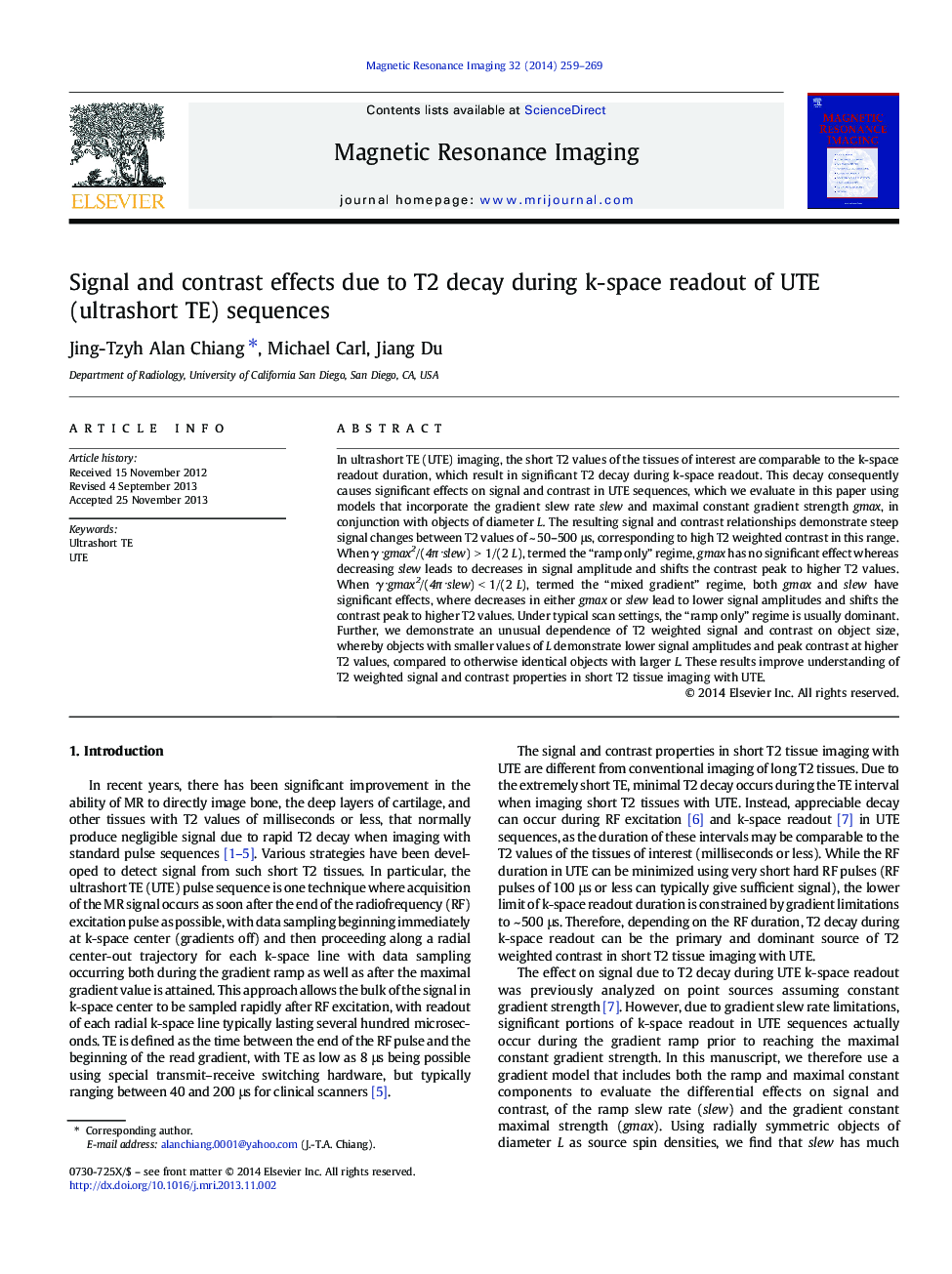| Article ID | Journal | Published Year | Pages | File Type |
|---|---|---|---|---|
| 1806571 | Magnetic Resonance Imaging | 2014 | 11 Pages |
In ultrashort TE (UTE) imaging, the short T2 values of the tissues of interest are comparable to the k-space readout duration, which result in significant T2 decay during k-space readout. This decay consequently causes significant effects on signal and contrast in UTE sequences, which we evaluate in this paper using models that incorporate the gradient slew rate slew and maximal constant gradient strength gmax, in conjunction with objects of diameter L. The resulting signal and contrast relationships demonstrate steep signal changes between T2 values of ~ 50–500 μs, corresponding to high T2 weighted contrast in this range. When γ⋅gmax2/(4π⋅slew) > 1/(2 L), termed the “ramp only” regime, gmax has no significant effect whereas decreasing slew leads to decreases in signal amplitude and shifts the contrast peak to higher T2 values. When γ⋅gmax2/(4π⋅slew) < 1/(2 L), termed the “mixed gradient” regime, both gmax and slew have significant effects, where decreases in either gmax or slew lead to lower signal amplitudes and shifts the contrast peak to higher T2 values. Under typical scan settings, the “ramp only” regime is usually dominant. Further, we demonstrate an unusual dependence of T2 weighted signal and contrast on object size, whereby objects with smaller values of L demonstrate lower signal amplitudes and peak contrast at higher T2 values, compared to otherwise identical objects with larger L. These results improve understanding of T2 weighted signal and contrast properties in short T2 tissue imaging with UTE.
